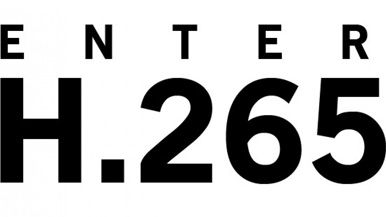|
|
Intermittent Issues: The H.26x FormatBy Ben GruchowJune 8, 2016
What we see with the H.26x standard, cultivated chiefly through H.262, 264, and 265, is a codec given toward evolution rather than redefinition. A trend toward increased coding efficiency is the clearest improvement here, with the same general architecture precipitating, on average, a halving of bitrate for equivalent video quality every 10 years over the past three decades. The trends going into the future will focus on further improvements to compression efficiency and spatial resolution. It’s worth noting that most of the efficiency tests conducted for H.265 (as of 2014, at least), were conducted with HD content (720p or 1080p), despite one of the stated goals of the format being to realize visuals beyond high definition (I bet the original packaging for the first wave of Blu-ray discs are feeling the crushing weight of that dated hyperbole now, and no, I will not let it go). Tests of H.265 with 4K content at 24 and 30 frames per second have been conducted since, and the format has been shown to handle the visual requirement easily. Results for greater resolutions and higher detail is something baked into the H.265 mission statement, which should afford the codec a greater degree of permanence and flexibility. Ultimately, Ultra HD is another stepping-stone; the ultimate goal here is, I assume, total perceptual immersion into the atmosphere of whatever film or event you’re watching. The implications of this are varied; the mind reels at the thought of being much closer to anything made by Zack Snyder or Michael Bay, for example. I’m reminded of The Pedestrian, a Ray Bradbury short story that I read all the way back in middle school. The story is narratively about Leonard Mead, a man in a city of millions who takes walks outside in total solitude. Everyone else stays inside, watching TV on giant wall screens. I don’t think we’ll get to that point; HDTV is still at a spotty-enough penetration rate as far as the market goes to invalidate much threat of an entirely disconnected society. Besides, it’s far more likely that we’d just stay buried in our smartphones.
[ View other columns by Ben Gruchow ]
[ View other Intermittent Issues columns ]
[ Email this column ]
|

|
|
|

|
Wednesday, April 24, 2024
© 2024 Box Office Prophets, a division of One Of Us, Inc.


